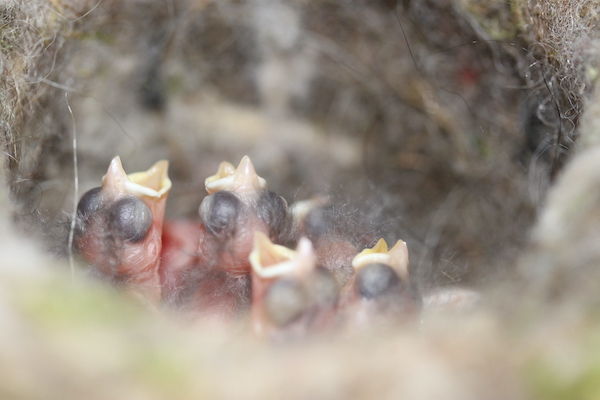Publication in „Conservation Letters” on urban bird nesting by prof. Marta Szulkin

17 03 2025
The more concrete, the smaller urban bird clutches—research by prof. Marta Szulkin from the Faculty of Biology at the University of Warsaw confirms this hypothesis and provides precise data that policymakers can use. An article on this topic has been published in „Conservation Letters”.
Prof. Szulkin’s long-term studies provide evidence that an increase in impermeable surfaces, such as concrete and asphalt, leads to a decline in breeding success among urban birds. When half of a biologically active area is built over, the number of fledglings per nest decreases by 50%.
“In the face of rapid urbanization, cities need hard data to support decisions on green infrastructure planning. Our publication provides crucial information for urban planners, landscape architects, and policymakers, helping to shape sustainable spaces. It clearly demonstrates how a systematic increase in concrete and asphalt reduces the number of fledglings leaving nest boxes” – says prof. Marta Szulkin.
Prof. Marta Szulkin emphasizes that this study is the first of its kind in Central and Eastern European cities. “In our publication, we used data collected over five years, but in reality, this research is the culmination of my ten years of work in Poland. During this time, we established a network of 500 nest boxes in Warsaw and its surroundings” – she explains.
The nest boxes were placed not only in parks but also in residential areas (including Olszynka Grochowska and Muranów), cemeteries, and urban and suburban forests. Some of them were also installed at the Ochota Campus of the University of Warsaw.
The publication provides detailed estimates for two common tit species: the great tit (Parus major) and the blue tit (Cyanistes caeruleus). Researchers observed the birds for several weeks each year, starting in early spring. Many PhD students contributed to the fieldwork, and the first author of the article is dr. Michela Corsini, a former PhD student ofp rof. Marta Szulkin.
Key Research Findings:
- Loss of vegetation and natural nesting sites in highly urbanized areas is an increasing challenge for urban wildlife.
- Breeding success declines with an increase in impermeable surfaces—when 50% of green areas are covered with concrete, the number of fledglings per nest is reduced by half.
- Urban planners and designers can use scientific data to create bird-friendly green spaces in cities.
These findings provide critical insights for shaping sustainable urban environments that support biodiversity.
Photo. Marion Chatelain